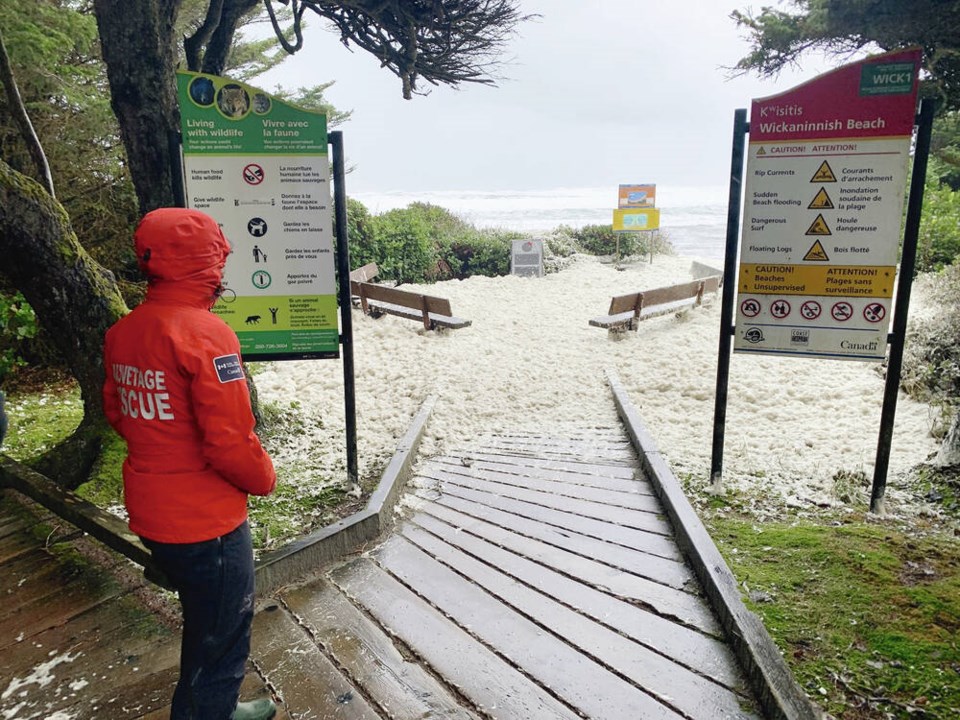The beaches around Tofino were smothered in sea foam Tuesday and Wednesday as high winds and big waves whipped up heaping servings of the “West Coast snow.”
Liam McNeil, acting resource conservation manger at Pacific Rim National Park Reserve, said Tuesday’s exceptionally high tides, mixed with strong winds and rough seas, churned up micro organisms such as bacteria and diatoms like zooplankton and phytoplankton to create loads upon loads of sea foam.
The off-white foam was neck-deep in some bays and beaches. Strong winds also scattered the foam into nearby forests, creating a winter wonderland scene.
“The locals call it West Coast snow because we don’t get a lot of snow here,” said McNeil.
He said sea foam turns up all year, but this week’s storm created much more than usual.
The foam isn’t harmful to humans in most cases, said McNeil, but can be toxic if it includes contaminants or if an algae bloom is in progress, so park officials are “not encouraging people to play in it.”
McNeil also said the foam can hide slippery logs and other debris on beaches and shorelines. If people are curious, they should watch it from a safe distance, he said.
The U.S. National Oceanic and Atmospheric Administration Service said sea foam is often an indication of a productive ocean ecosystem.
An extreme wave hazard advisory was issued for beaches in Pacific Rim National Park Reserve on Monday and Tuesday, where tides were expected to reach up to 10 metres.
Visitors were advised to avoid swimming and surfing in the area amid large waves, storm surges, strong currents and flooding of the upper shoreline.
So would you venture down this sea foam covered trail? FYI it was chest deep in places! #tofino #ucluelet pic.twitter.com/Gk6cD6sgZp
— David McColm (@davidlmccolm) January 10, 2024
dkloster@timescolonist.com
>>> To comment on this article, write a letter to the editor: letters@timescolonist.com




